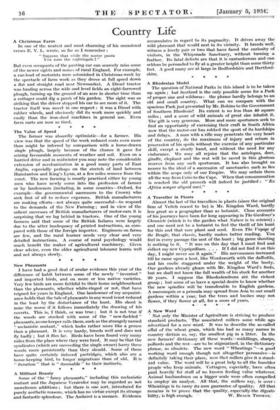New Pheasants
I have had a good deal of ocular evidence this year of the difference of habit between some of the newly " invented " and imported birds, and on more or less native varieties. Very few birds are more faithful to their home neighbourhood than the pheasants, whether white-ringed or not, that have reigned for years in England. One landowner of my acquaint- ance holds that the tale of pheasants in any wood is not reduced in the least by the disturbance of the hunt. His shoot is none the worse if it follows immediately the drawing of his coverts. This is, I think, or was true ; but it is not true if the woods are stocked with some of the " new-tackled" pheasants, as one keeper calls them, such as thestmngely named melanistic mutant," which looks rather more like a grouse than a pheasant. It is very hardy, breeds well and does not fly badly ; but it flies far. Birds have been found very many miles from the place where they were bred. It may be that the syndicates (which are succeeding the single owner) harry these woods more persistently than they should. Some of them have quite certainly induced partridges, which also are a home-keeping bird, to longer migrations than of old. it is " iteration " that is " damnable " to their instincts.






































 Previous page
Previous page